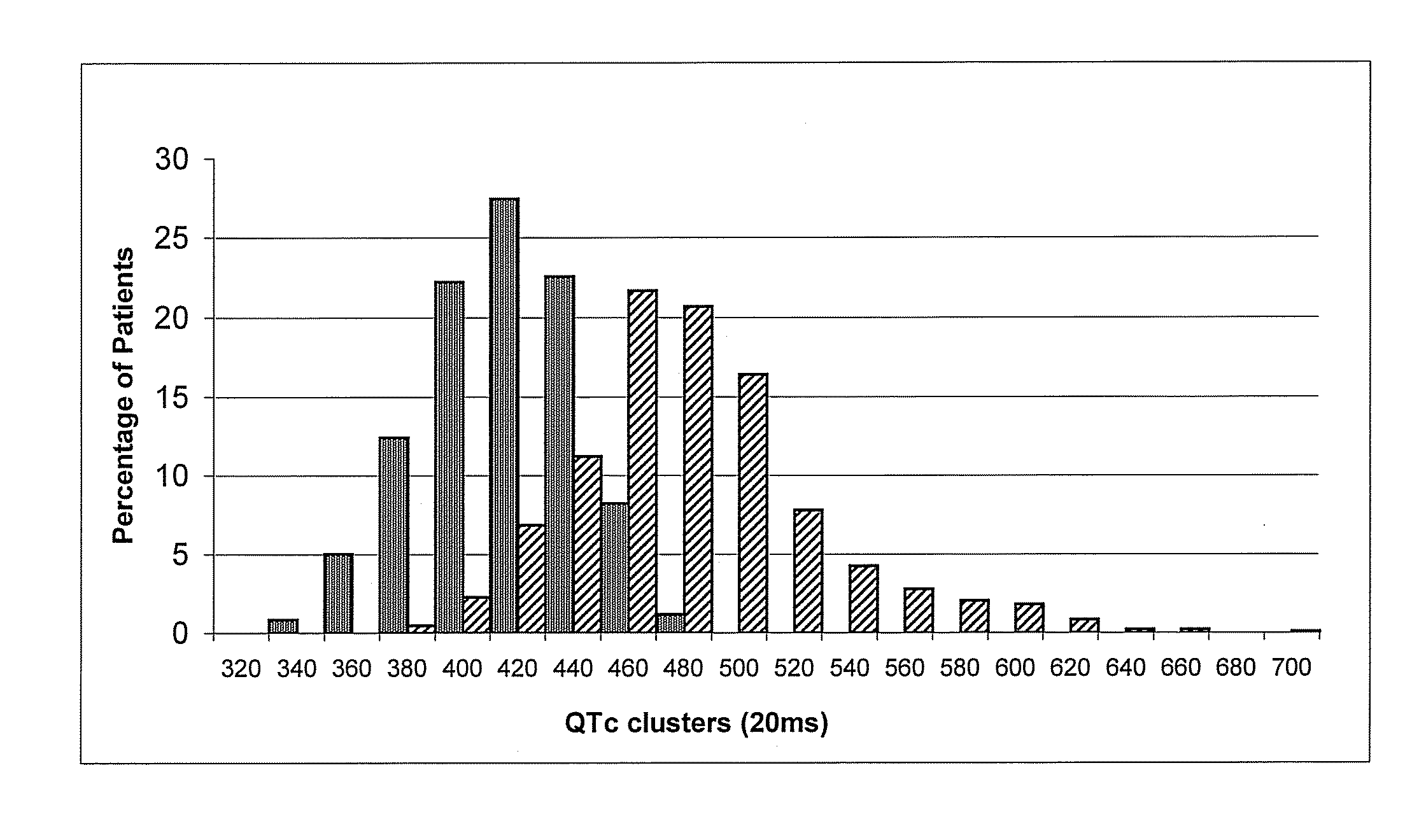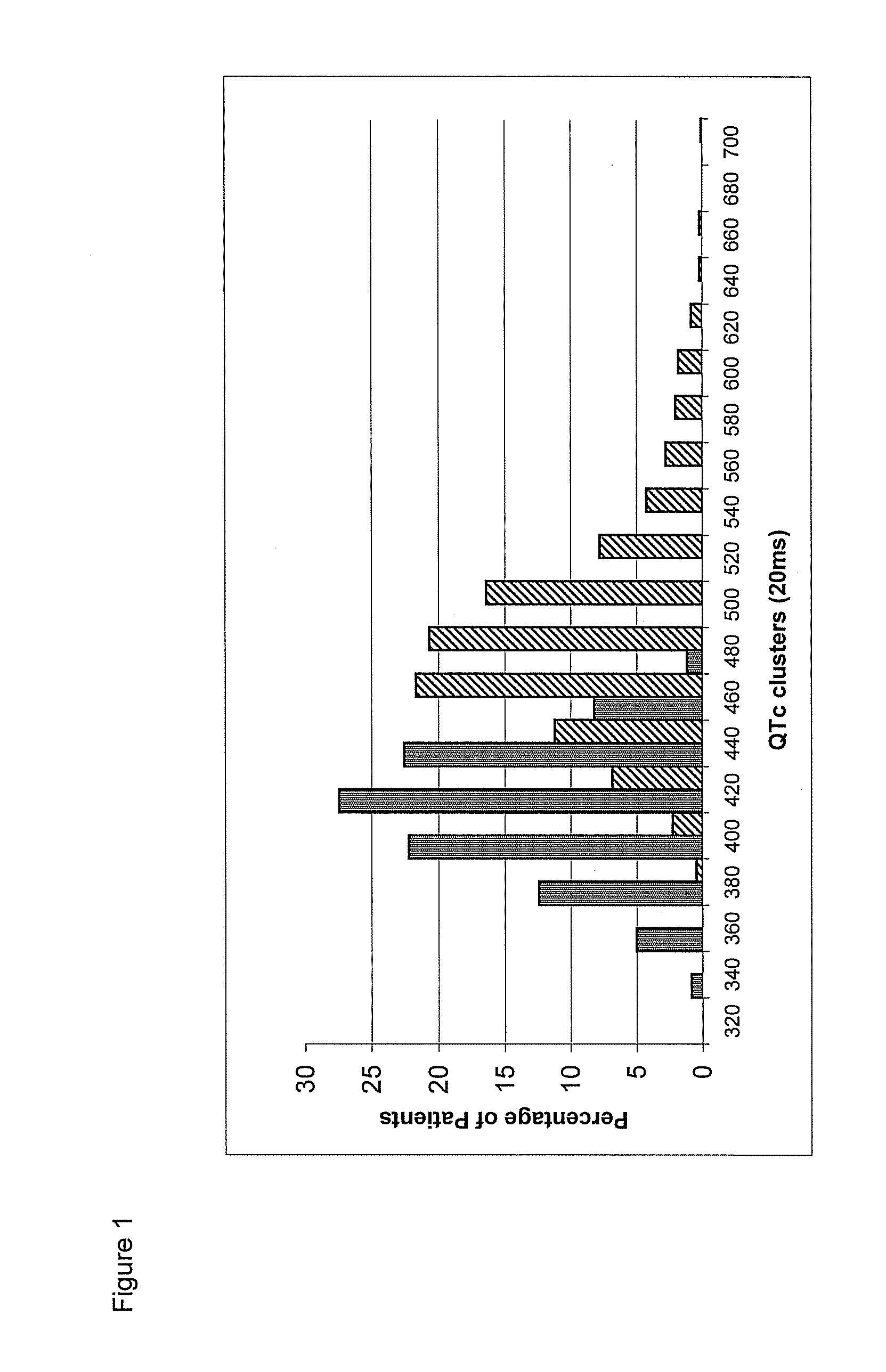Mutations Associated with the Long QT Syndrome and Diagnostic Use Thereof
a technology of mutations and long qt, applied in the field of mutations associated with long qt syndrome, can solve the problems of inability to perform genotype—phenotype relation studies in such a small population, limit the diffusion of molecular diagnosis, and high cost of approach
- Summary
- Abstract
- Description
- Claims
- Application Information
AI Technical Summary
Problems solved by technology
Method used
Image
Examples
example 1
Clinical Characterization of the Sample
[0109]ECGs and clinical data were collected and analyzed in blind relative to the genetic status of the samples. QTc (QTc=QT / vRR) data were measured using the ECG recorded during the first visit.
[0110]The demographic characteristics of the sample are shown in the following table.
TABLE 5Family membersGeneticallyGenetically notProbandsaffectedaffectedP-valueN310521594Males (%)147 (47)231 (44)281 (47)Age, years (mean) 21 ± 20 (16) 33 ± 20 (35) 29 ± 19QTc* (mean)495 ± 49 (490)461 ± 40 (458)406 ± 27 (408)*In ms.**Post-hoc analysis between groups.QTc duration and occurrence by genotype.
[0111]The QTc value in the various populations examined has been reported in Table 3. As can be deduced from the table, in the mutation carriers the QTc was 474+46 msec (median value: 467 msec, IQR: 444-495 msec) while, among healthy family members, it was 406±27 msec (median value: 409 msec, IQR 390-425 msec). Incomplete penetrance was defined as the percentage of mut...
example 2
Genetic Characterization of the Sample
[0115]Genetic analysis of the sample revealed that 310 / 430 (72%) of the probands and 521 family members were carriers of 235 different mutations (139 of which were novel) that can determine the LQTS Syndrome.
[0116]From these 310 probands, the genetic analysis was extended to a total of 1115 family members: a mutation was found in 521 of them, while 594 were found to be healthy. In total, the study revealed 831 carriers of a mutation predisposing to LQTS symptoms and 594 healthy family members.
[0117]The mutation rate in the different genes was distributed as follows: 49% KCNQ1; 39% KCNH2; 10% SCN5A; 1.7% KCNE1; 0.7% KCNE2. About 90% of genotyped patients had mutations in KCNQ1 and KCNH2 genes, while 44% of the probands carried common mutations. These statistics were verified again with an independent set of 75 genotyped probands (FIG. 1).
[0118]All the mutations identified and characterized for the first time in the present invention are reported ...
PUM
| Property | Measurement | Unit |
|---|---|---|
| electrophoresis | aaaaa | aaaaa |
| length | aaaaa | aaaaa |
| surface electrocardiogram | aaaaa | aaaaa |
Abstract
Description
Claims
Application Information
 Login to View More
Login to View More - R&D
- Intellectual Property
- Life Sciences
- Materials
- Tech Scout
- Unparalleled Data Quality
- Higher Quality Content
- 60% Fewer Hallucinations
Browse by: Latest US Patents, China's latest patents, Technical Efficacy Thesaurus, Application Domain, Technology Topic, Popular Technical Reports.
© 2025 PatSnap. All rights reserved.Legal|Privacy policy|Modern Slavery Act Transparency Statement|Sitemap|About US| Contact US: help@patsnap.com



